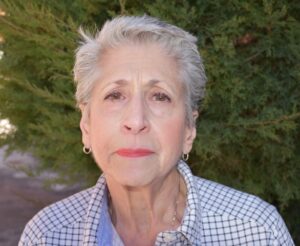Workforce Development Program Makes the Journey Easier

By Trenaya M. Reid, Workforce Development Manager
The Amputee Coalition’s Workforce Development Program is designed to assist participants (youth ages 15-17, adults, and veterans) within the limb loss and limb difference community with career exploration, transitioning back into the workforce, or starting their journey to employment.
There is a Workforce Development Program designed for adults, veterans, and public health workers, and another program designed for youth participants within the Youth Engagement Program to assist with career exploration, along with internships and summer job opportunities. The services provided under both the adult and youth Workforce Development Programs include one-on-one career development meetings, assistance with resume writing, and fact sheets and webinars on job-related topics.
The programs aim to help you ELEVATE YOUR POTENTIAL as you enter or reenter the job market.
“You are not defined by your limb loss/limb difference,” said Paula Golladay, who was involved in the hiring space for much of her career. “You are defined by the quality of your knowledge and work ethics.”
We will be launching our Workforce Development webpage, in addition to two job board platforms: a job center for adults and veterans, and the YEP Workforce Dashboard. Both platforms will include employment, summer job, and internship opportunities for our participants during Limb Loss and Limb Difference Awareness Month in April. The two platforms will also allow employers and organizations to post their job opportunities and to recruit the best talent within the limb loss and limb difference community.
Within the Workforce Development Program, as workforce development manager, I have the opportunity to collaborate with many participants with limb loss and limb difference to assist them with their employment journey. In addition, I have the opportunity to network and collaborate with employers and organizations to discuss job and career development opportunities for our participants.

Photo of Paula Golladay
Paula is one participant who has been very active with her involvement in the Workforce Development Program. She is a below-knee amputee who is a retired federal government worker, assisting with the recruitment process for people with disabilities within federal employment and within a program called the Federal Workforce Recruitment Program.
During her time working as a federal recruiter for people with disabilities, Paula worked within the hiring process called Schedule A Hiring Authority. Schedule A Hiring Authority is used to hire qualified people with disabilities for federal job positions noncompetitively, without going through the traditional hiring process. If you would like to learn more about the Schedule A Hiring Authority process, this information can be found on the U.S. Office of Personnel Management website.
Paula had the opportunity to share a few words about her experience collaborating with the Workforce Development Program, as well as the steps participants with limb loss and limb difference can take as they start their employment journey.
“Trenaya Reid, AC’s workforce development manager, and I have shared information regarding employment opportunities for the limb loss/limb difference community. Our combined knowledge and experience regarding the federal government noncompetitive hiring process may provide candidates with critical assistance. I am an individual with limb loss and a former federal employee program manager for noncompetitive, with an emphasis upon the hiring process known as ‘Schedule A,’ or CFR 5 213. 3102 (a).
“Seeking employment can be daunting. It seems as if challenges crop up at every turn. As a retired federal program manager for Schedule A hiring, I am providing the following key points to keep at your ready.”
- Reasonable accommodation must be provided during the interview and at the worksite.
- Understand that work site accommodations may take time to acquire or develop an applicable workstation. Requesting timely accommodation will help ease your first day of work or first day returning to work.
- During the interview, hiring officials may not ask you direct questions regarding your disability. Officials may ask how you will perform the major aspects of the job, such as: The job requires you to move a heavy object. Can you explain how you will accomplish this task?
- Clarify your specific needs to your manager or human resources personnel as soon as possible. Accommodation for one person with limb loss may not be applicable to another person.
- Keep in mind you may be the only amputee someone has encountered. This is your golden opportunity to increase disability awareness, to correct terminology, and most importantly to put others at ease.

